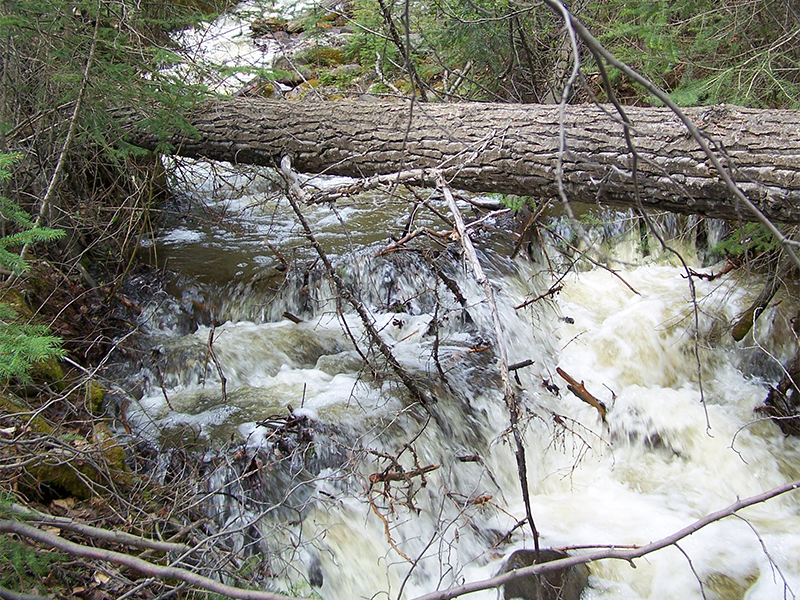
Abstract
Large woody debris (LWD) is a key link between riparian forests and streams; however, the temporal dynamics of in-stream wood remains poorly quantified. Using dendrochronology, we evaluated the dynamics of five Pinus-dominated and five Picea-dominated riparian forests in the foothills of Alberta and cross-dated the ring widths of 186 pieces of LWD. Time since death of LWD ranged from 2 to 143 years, with maximums of 86 and 143 years for Pinus and Picea, respectively. Recruitment of Pinus LWD was influenced by stand-replacing fires followed by self-thinning about 40 years after stand establishment. In uneven-aged Picea-dominated forests, tree mortality and LWD recruitment were due to fine-scale disturbances. Time since death increased significantly with decay and position classes, which resulted in changes in LWD function through time. LWD persisted in the bridge position for about 30 years. Bridged LWD was least decayed, was significantly longer, and had greater volume than LWD in other positions. LWD remained in partial bridge and loose positions about 15 years and >80 years when submerged in water and buried in sediment. Given the persistence of LWD, we conclude that management that alters wood abundance and recruitment has short- and long-term implications for the structure and function of small streams.
To obtain a copy of this paper, please contact Dr. Lori Daniels (lori.daniels@ubc.ca)
Citation
Powell, S.R., L.D. Daniels, and T.A. Jones. 2009. “Temporal dynamics of large woody debris in small streams of the Alberta foothills.” Canada. Canadian Journal of Forest Research. 39: 1159-1170. doi: 10.1139/X09-035






